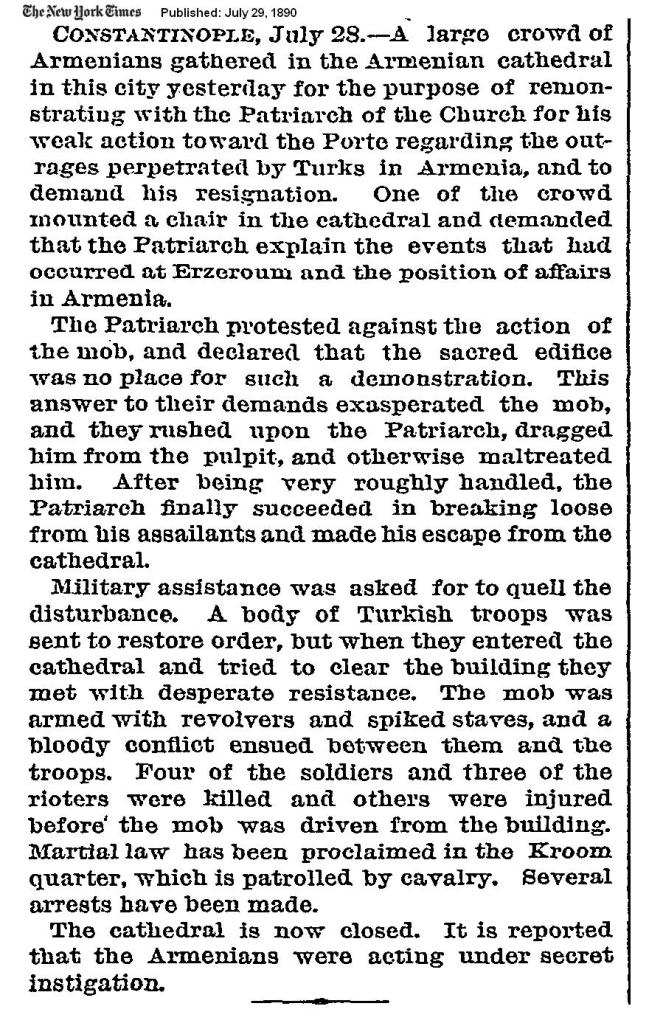Among many documents in foreign archives which are often ignored or concealed, a document in Russia’s official archives shows Armenians carried out mass killings in 1915.
The 65 page report was written by Russian Brigadier General Leonid Bolkhovinitov, who was stationed in the Caucasus front, and dispatched to the Russian military headquarters on December 11, 1915 and titled “The Real Situation.”
It constitutes a follow-up to a report submitted to the Russian Tsar by Armenians on “The Activities of the Armenian Voluntary Bands in the Caucasus.” Bolkhovinitov says in his report that “Armenian voluntary units had started violent slaughters against the Muslim people with racist motives,” and that Armenian reports given to the Russians did not reflect the actual situation in the region. The Russian official states in his report that “We shall not believe in the death tolls that the Armenians give. The number of missing people has been constantly exaggerated in the memos distributed by the Dashnak party and there is no doubt that they are politically-motivated.”
Bolkhovinitov’s report also underlines that the history of the events which he dubs the “Armenian Problem” go back to 1890.
Some of the important findings Bolkhovinitov lists in his report are:
- European diplomats imposed the ideas of an “Independent Armenia” on the Armenians. Armenian intellectuals in spreading seditious ideology among Armenians in the Ottoman Empire and designed the plan of shedding enough blood to bring about European intervention.
- Armenian terrorist organizations waged violence not only against Ottoman Muslims but also against Armenians who did not cooperate with them.
- Armenian voluntary bands engaged in brutal massacres against the Muslim population in the occupied areas; ethnically cleansed the Muslim population regardless of gender and age, plundered and destroyed the villages. These actions are systematic.
According to Bolhovitinov’s report, Armenian voluntary bands who joined the Russian forces during World War I wreaked havoc on the civilian population of Anatolia. The report includes photographs of the notorious Armenian “Kazar” and “Sepuh” bands, which, according to Bolhovitinov, not even the Russians were able keep under control.
Given the fact that Russia and the Ottomans were enemies during the late 1910s and the report is written by a high level Russian official on the ground in the conflict area, increases the importance of the report.
Source: http://armeniangenocidelies.com/2012/09/26/russian-archives-refute-armenian-genocide-claims/











 Inauguration ceremony of President of Azerbaijan Ilham Aliyev was held
Inauguration ceremony of President of Azerbaijan Ilham Aliyev was held Ilham Aliyev wins presidential election with 92.05 percent of votes VIDEO
Ilham Aliyev wins presidential election with 92.05 percent of votes VIDEO President Ilham Aliyev, First Lady Mehriban Aliyeva and family members voted in Khankendi VIDEO
President Ilham Aliyev, First Lady Mehriban Aliyeva and family members voted in Khankendi VIDEO Plenary session of 6th Summit of Conference on Interaction and Confidence Building Measures in Asia gets underway in Astana. President Ilham Aliyev attends the plenary session VIDEO
Plenary session of 6th Summit of Conference on Interaction and Confidence Building Measures in Asia gets underway in Astana. President Ilham Aliyev attends the plenary session VIDEO President Ilham Aliyev was interviewed by Azerbaijani TV channels in Prague VIDEO
President Ilham Aliyev was interviewed by Azerbaijani TV channels in Prague VIDEO














